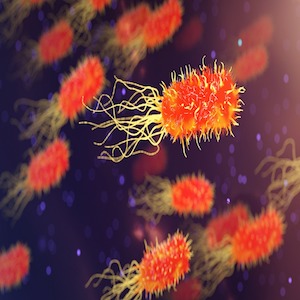Effects of osmotic stress on Listeria monocytogenes ATCC 7644: persistent cells and heat resistance

Accepted: 12 January 2023
HTML: 8
All claims expressed in this article are solely those of the authors and do not necessarily represent those of their affiliated organizations, or those of the publisher, the editors and the reviewers. Any product that may be evaluated in this article or claim that may be made by its manufacturer is not guaranteed or endorsed by the publisher.
Authors
Persistent bacteria are a microbial subpopulation that, exposed to bactericidal treatment, is killed at a slower rate than the rest of the population they are part of. They can be triggered either following stress or stochastically without external signals. The hallmark of persistent bacteria is the biphasic killing curve, a sign that, within a microbial population, two subpopulations are inactivated at a different rate. Furthermore, when plated into a fresh medium and in the absence of stressors, persistent bacteria typically remain in the lag phase longer before resuming active replication. This study aims to evaluate in vitro whether the formation of persistent cells in a strain of Listeria monocytogenes can be triggered by exposure to osmotic stress and if this phenomenon can increase heat resistance in the bacterial population. In a first experiment, the lag time distribution of a L. monocytogenes strain grown in a 6% NaCl broth was evaluated using the software ScanLag. A stationary phase broth culture was inoculated on agar plates placed on an office scanner inside an incubator at 37°C. The plates were scanned every 20’ for 4 days and the acquired images were automatically elaborated with the aid of MatLab software in order to evaluate the appearance times of every single colony. The experiment was also carried out on a control culture obtained by growing the strain in the broth without salt. In a second experiment, the same broth cultures, after proper dilutions to rebalance NaCl concentration, were subjected to a heat treatment at 51°C and the death curves obtained were parameterized using the GinaFit system. Results showed that the lag phase of 31.40% of the salt culture colonies was long enough to suppose the formation of persistent bacteria. Analyses of the thermal survival curves showed that the shoulder and tail model was the one that best represented the inactivation trend of the salt culture, unlike the control culture, whose trend was essentially linear. Results of the present study show how exposure to salt could induce the formation of persistent bacteria in a L. monocytogenes strain. The last raises concerns as persistent cells may not only be undetected with common analytical techniques but they even show a greater heat resistance.
How to Cite

This work is licensed under a Creative Commons Attribution-NonCommercial 4.0 International License.
PAGEPress has chosen to apply the Creative Commons Attribution NonCommercial 4.0 International License (CC BY-NC 4.0) to all manuscripts to be published.

 https://doi.org/10.4081/ijfs.2023.10880
https://doi.org/10.4081/ijfs.2023.10880



